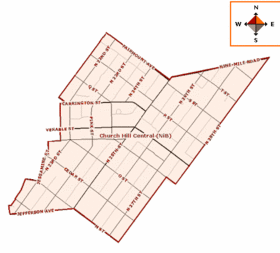RECENT COMMENTS
Neighborhoods in Bloom is working well
The RTD has a story that says that Richmond’s Neighborhoods in Bloom program is doing so well it is expected to serve as a catalyst for other cities that hope to turn blight into economically viable areas.
The article says that property values of homes in seven targeted areas in Richmond rose 10 percent a year more than they would have with no assistance. The rehab efforts are sparking private investments and attracting businesses. The city will get more in tax revenues — $14.7 million, to be exact, over a 20-year period, according to the study by the Federal Reserve Bank of Richmond and the Local Initiatives Support Corp.
The investment threshold to achieve good results was an average $20,000 per block over the five-year period. Any less would not stimulate new investments in an area. Any more would not bring in that much more proportionately in revenue.
NiB is a program that supports the restoration of Richmond’s historic neighborhoods. It promotes housing renovation, restoration, construction, and sales in select neighborhoods through services and financial incentives. The area that Neighborhoods in Bloom calls Church Hill Central is an area that is made up of parts of Fairmount and Church Hill North, bounded by 28th Street, Nine Mile Road/Fairmount Avenue, 22nd Street, and Jefferson Avenue/M Street.







“a Times-Dispatch review suggest that Jackson Ward, Blackwell and central Church Hill have seen deeper-than-average reductions in major crimes while the Neighborhoods in Bloom program has been running.” [1]
A PDF from the LISC website, The Ripple Effect: Ecnomic Impacts of Targeted Community Investments (8/2005), has more specific info and numbers about the impact of the Neighborhood in Bloom program in Richmond.
As you see, this thread is 11 years old. My question… is “Neighborhoods In Bloom” still around? They use to be high profile in our area but you never hear of them now.
About this same time, a commercial was filmed at our house for them by the Martin Agency that never aired.
Eric
I will ask again, is this program still going? Seems like it was popular, promoted, then disappeared?
“Fourteen years after its inception, the program is still running but on a trimmed budget. In neighborhoods like Carver where revitalization brought over 60 new homes the program’s initiatives have also been hampered by an overabundance of private investors.”
http://mmj.vcu.edu/2013/12/09/revitalization-efforts-cut-short/
“The NiB program faded in prominence after 2004, however, because of the kind of broader political shifts and personnel transitions that can alter policy priorities in any city. In Richmond’s case, a structural change from a council-manager system to an at-large mayor, as well as the departure of key city and nonprofit staff, eventually led to decreased emphasis on (and funding for) the program. As Accordino and Fasulo explain, “Between 2002 and 2012, the city experienced a 35% decline in CDBG and HOME funds. Over the same period, its expenditures in the Neighborhoods in Bloom areas declined by 68%.”15 A lack of clear metrics defining success for the program and of a neighborhood exit strategy also contributed to NiB’s decline, and Richmond has largely returned to a less-targeted distribution approach for housing funds.16
NiB’s success and eventual decline presents an instructive example for other cities wishing to garner support for targeted investment. Although NiB was a strategy proven to effect real change to neighborhood conditions, it also proved that such change can be difficult to sustain politically. And Richmond, of course, is a medium-sized city; officials in larger cities, such as Detroit, often experience much more difficulty building coalitions and support for targeting efforts. ”
https://www.huduser.gov/portal/periodicals/em/winter14/highlight2.html